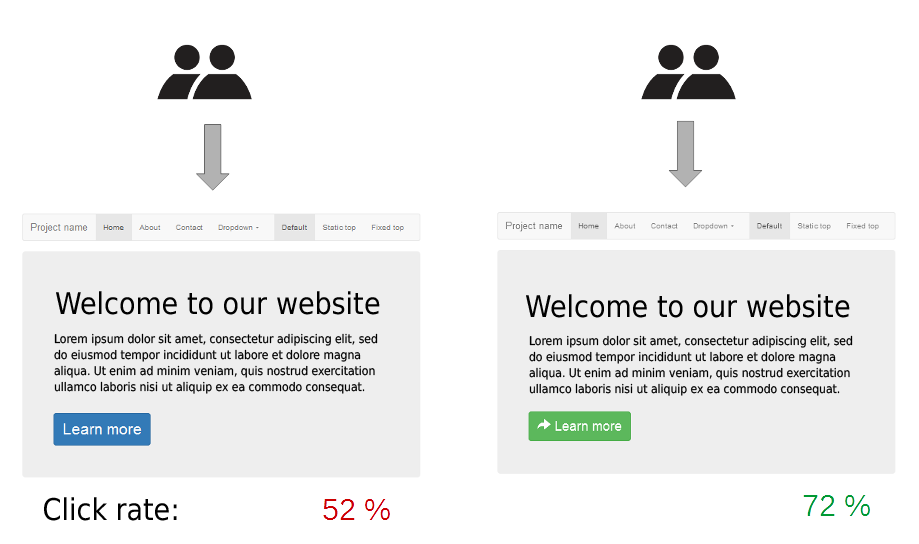In marketing and business intelligence, A/B testing is a term for a randomized experiment with two variants, A and B, which are the control and variation in the controlled experiment.[1] A/B testing is a form of statistical hypothesis testing with two variants leading to the technical term, two-sample hypothesis testing, used in the field of statistics. Other terms used for this method include bucket tests and split-run testing. These terms can have a wider applicability to more than two variants, but the term A/B testing is also frequently used in the context of testing more than two variants. In online settings, such as web design (especially user experience design), the goal of A/B testing is to identify changes to web pages that increase or maximize an outcome of interest (e.g., click-through rate for a banner advertisement). Formally the current web page is associated with the null hypothesis. A/B testing is a way to compare two versions of a single variable typically by testing a subject’s response to variable A against variable B, and determining which of the two variables is more effective.[2]
As the name implies, two versions (A and B) are compared, which are identical except for one variation that might affect a user’s behavior. Version A might be the currently used version (control), while version B is modified in some respect (treatment). For instance, on an e-commerce website the purchase funnel is typically a good candidate for A/B testing, as even marginal improvements in drop-off rates can represent a significant gain in sales. Significant improvements can sometimes be seen through testing elements like copy text, layouts, images and colors,[3]but not always. The vastly larger group of statistics broadly referred to as multivariate testing or multinomial testing is similar to A/B testing, but may test more than two different versions at the same time and/or has more controls, etc. Simple A/B tests are not valid for observational, quasi-experimental or other non-experimental situations, as is common with survey data, offline data, and other, more complex phenomena.
A/B testing has been marketed by some as a change in philosophy and business strategy in certain niches, though the approach is identical to a between-subjects design, which is commonly used in a variety of research traditions.[4][5][6] A/B testing as a philosophy of web development brings the field into line with a broader movement toward evidence-based practice. The benefits of A/B testing are considered to be that it can be performed continuously on almost anything, especially since most marketing automation software now, typically, comes with the ability to run A/B tests on an on-going basis. This allows for updating websites and other tools, using current resources, to keep up with changing trends.
Source: A/B testing – Wikipedia
